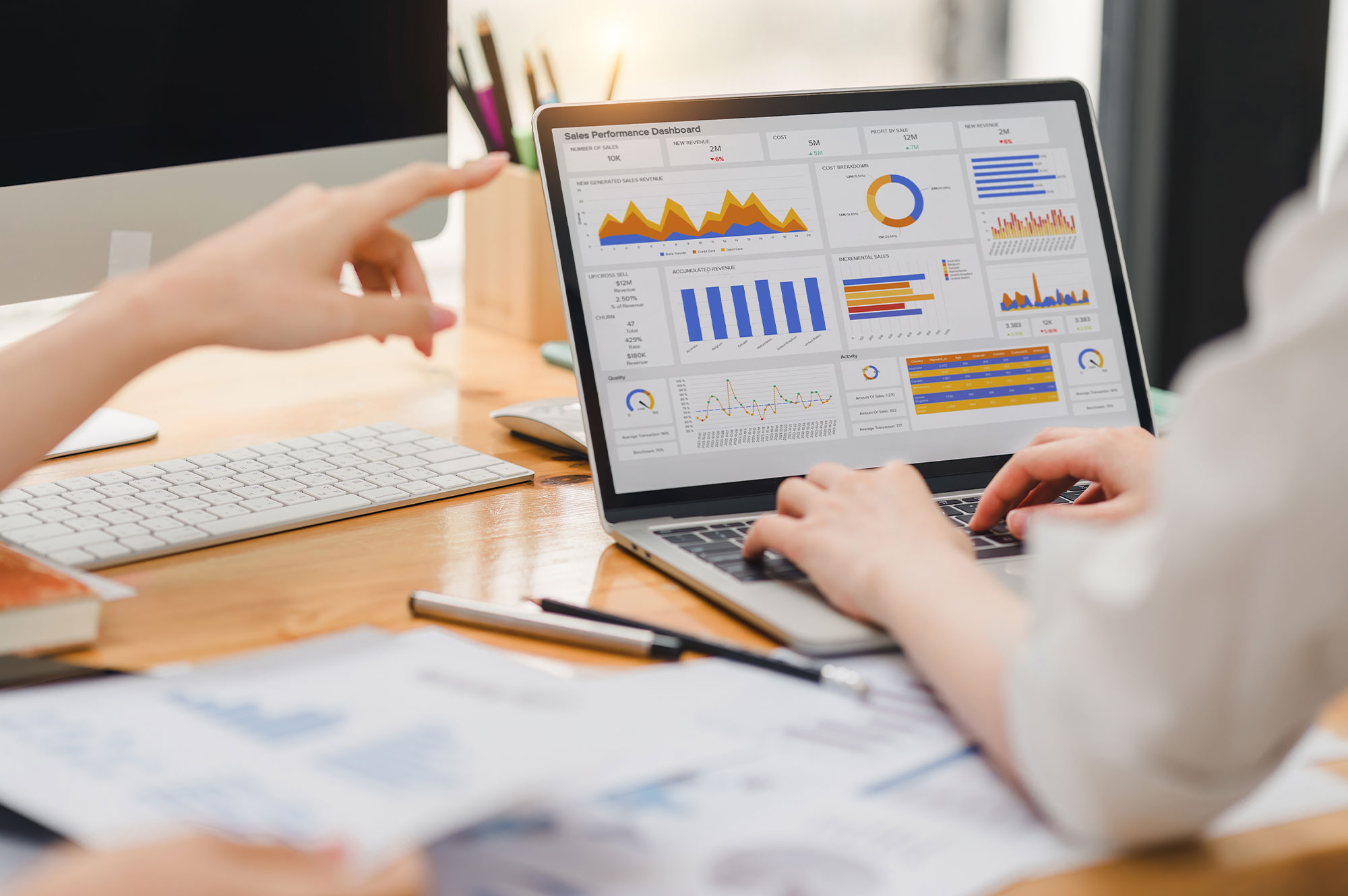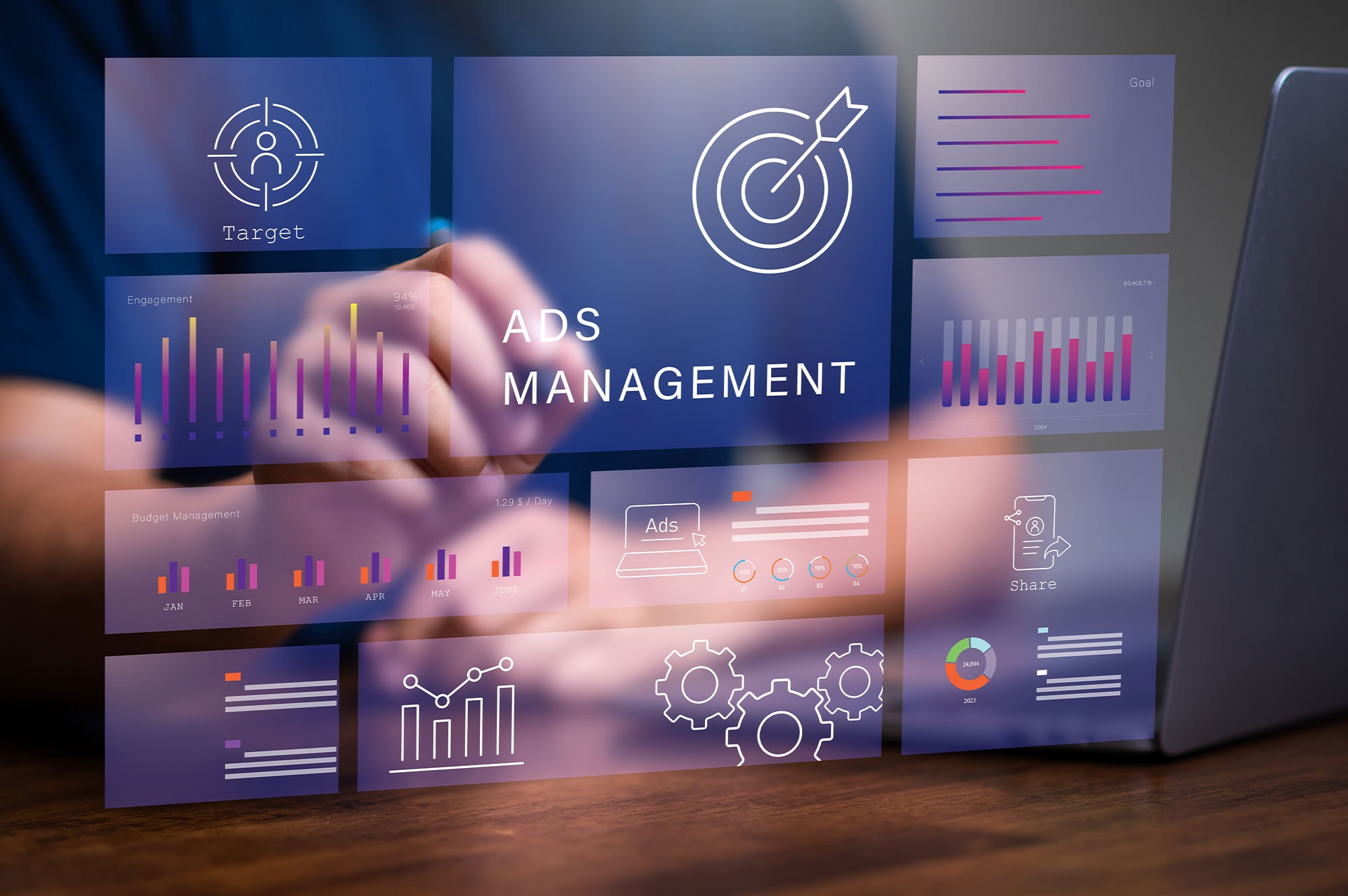The Campainless Blog

LinkedIn Ads play a crucial role in B2B marketing strategies, helping brands reach decision-makers, generate leads, and drive conversions. However, tracking LinkedIn analytics effectively is essential for optimizing campaigns and ensuring maximum ROI.
This comprehensive LinkedIn Ads Metrics Glossary covers all the important LinkedIn metrics, explaining what they mean, why they matter, and what benchmarks to aim for. Whether you’re a marketer, agency, or business owner, this guide will provide valuable insights into your LinkedIn marketing efforts.

Engagement metrics measure how users interact with your LinkedIn posts and sponsored posts. These are key indicators of content relevance and audience interest.
Definition: The percentage of people who clicked on your ad or post after seeing it.
Formula:
<math>
<mrow>
<mi>CTR</mi>
<mo>=</mo>
<mfrac>
<mrow>
<mi>Total Clicks</mi>
</mrow>
<mrow>
<mi>Total Impressions</mi>
</mrow>
</mfrac>
<mo>×</mo>
<mn>100</mn>
</mrow>
</math>Why It Matters: A high CTR indicates that your content resonates with your target audience and encourages action.
Good Baseline:
Definition: The percentage of users who engage (clicks, reactions, comments, shares) with your post or ad.
Formula:
<math>
<mrow>
<mi>Engagement Rate</mi>
<mo>=</mo>
<mfrac>
<mrow>
<mi>Total Engagements</mi>
</mrow>
<mrow>
<mi>Total Impressions</mi>
</mrow>
</mfrac>
<mo>×</mo>
<mn>100</mn>
</mrow>
</math>Why It Matters: Measures overall interest and interaction levels. A higher rate means stronger audience engagement.
Good Baseline: 1% – 2%
Definition: The number of times users react to a post (e.g., Like, Celebrate, Love).
Why It Matters: Helps gauge sentiment and audience response to your content.
Good Baseline: Varies by content type but should show steady growth over time.
Definition: The number of times a post is shared by LinkedIn users.
Why It Matters: Shows organic reach expansion and content virality.
Definition: The number of comments on a post or ad.
Why It Matters: A strong indicator of engagement and deeper audience interest.
Conversion metrics track how well your ads drive actions, such as lead generation or website visits. Tracking the most important LinkedIn metrics is crucial to optimize marketing efforts, as it helps gauge the performance of your LinkedIn pages, improve engagement, and strategize content effectively to enhance your B2B presence.
LinkedIn’s analytics tools provide valuable insights into follower demographics, engagement rates, and overall performance, making them essential for tailoring content strategies effectively.
Definition: The number of times users open a LinkedIn Lead Gen Form after clicking an ad.
Why It Matters: Indicates the effectiveness of your ad in generating interest.
Good Baseline: Varies by industry but 20% – 30% of form opens should ideally convert to submissions.
Formula:
<math>
<mrow>
<mi>Lead Form Opens</mi>
<mo>=</mo>
<mi>Total Ad Clicks</mi>
<mo>×</mo>
<mi>Lead Form Open Rate</mi>
</mrow>
</math>Definition: The number of users who complete and submit a Lead Gen Form.
Why It Matters: Directly tied to LinkedIn marketing strategy success in generating qualified leads.
Good Baseline: 10% – 15% conversion rate from form opens.
Formula:
<math>
<mrow>
<mi>Lead Form Submissions</mi>
<mo>=</mo>
<mi>Lead Form Opens</mi>
<mo>×</mo>
<mi>Submission Rate</mi>
</mrow>
</math>Definition: The average cost incurred to generate one lead.
Formula:
<math>
<mrow>
<mi>CPL</mi>
<mo>=</mo>
<mfrac>
<mrow>
<mi>Total Ad Spend</mi>
</mrow>
<mrow>
<mi>Total Leads</mi>
</mrow>
</mfrac>
</mrow>
</math>Why It Matters: Lower CPL indicates more efficient marketing efforts.
Good Baseline:
Definition: The number of users who take a specific action on your site after clicking an ad (e.g., form submission, purchase).
Why It Matters: Measures ad effectiveness in driving valuable actions.
Definition: The percentage of users who complete a desired action after clicking an ad.
Formula:
<math>
<mrow>
<mi>Conversion Rate</mi>
<mo>=</mo>
<mfrac>
<mrow>
<mi>Total Conversions</mi>
</mrow>
<mrow>
<mi>Total Clicks</mi>
</mrow>
</mfrac>
<mo>×</mo>
<mn>100</mn>
</mrow>
</math>Why It Matters: Shows how well your ad and landing page drive conversions.
Good Baseline: 2% – 10% depending on industry.
Video ads are a powerful tool in LinkedIn marketing strategy, but measuring their performance is crucial.
Definition: The number of times a video ad was viewed for at least 2 seconds while at least 50% of the video was in view.
Why It Matters: Indicates how well your video content captures initial attention.
Good Baseline: 30% – 50% view rate
Definition: The percentage of users who watch your video ad to completion.
Formula:
<math>
<mrow>
<mi>Completion Rate</mi>
<mo>=</mo>
<mfrac>
<mrow>
<mi>Completed Views</mi>
</mrow>
<mrow>
<mi>Total Views</mi>
</mrow>
</mfrac>
<mo>×</mo>
<mn>100</mn>
</mrow>
</math>Why It Matters: Higher rates suggest engaging video content.
Good Baseline: 15% – 30%
Definition: The average amount spent per video view.
Formula:
<math>
<mrow>
<mi>Cost Per View</mi>
<mo>=</mo>
<mfrac>
<mrow>
<mi>Total Ad Spend</mi>
</mrow>
<mrow>
<mi>Total Video Views</mi>
</mrow>
</mfrac>
</mrow>
</math>Why It Matters: Helps optimize budget allocation for video ads.
Good Baseline: $0.05 – $0.10 per view
Tracking LinkedIn ads performance requires monitoring efficiency-related metrics.
Definition: The cost incurred per click on your ad.
Formula:
<math>
<mrow>
<mi>CPC</mi>
<mo>=</mo>
<mfrac>
<mrow>
<mi>Total Ad Spend</mi>
</mrow>
<mrow>
<mi>Total Clicks</mi>
</mrow>
</mfrac>
</mrow>
</math>Why It Matters: Lower CPC means more cost-efficient ad performance.
Good Baseline:
Definition: The cost per 1,000 ad impressions.
Formula:
<math>
<mrow>
<mi>CPM</mi>
<mo>=</mo>
<mfrac>
<mrow>
<mi>Total Ad Spend</mi>
</mrow>
<mrow>
<mi>Total Impressions</mi>
</mrow>
</mfrac>
<mo>×</mo>
<mn>1000</mn>
</mrow>
</math>Why It Matters: Helps assess the cost of visibility.
Good Baseline: $30 – $90
Definition: The revenue generated for every dollar spent on ads.
Formula:
<math>
<mrow>
<mi>ROAS</mi>
<mo>=</mo>
<mfrac>
<mrow>
<mi>Revenue from Ads</mi>
</mrow>
<mrow>
<mi>Total Ad Spend</mi>
</mrow>
</mfrac>
</mrow>
</math>Why It Matters: Indicates overall ad profitability.
Good Baseline: 3x – 5x
Definition: The percentage of total eligible impressions your ad received.
Why It Matters: A higher share means better ad visibility.
Formula:
<math>
<mrow>
<mi>Impression Share</mi>
<mo>=</mo>
<mfrac>
<mrow>
<mi>Total Impressions</mi>
</mrow>
<mrow>
<mi>Total Eligible Impressions</mi>
</mrow>
</mfrac>
<mo>×</mo>
<mn>100</mn>
</mrow>
</math>Understanding LinkedIn analytics is crucial for improving LinkedIn performance and optimizing your content strategy. Whether you’re analyzing visitor analytics, follower demographics, or LinkedIn reactions, tracking these key LinkedIn metrics ensures better ROI on your LinkedIn marketing efforts.
By leveraging LinkedIn analytics tools and optimizing campaigns based on these metrics to track, marketers can gain deeper insights into their LinkedIn audience network and make data-driven decisions for future posts.
Your LinkedIn company page is a key asset in your social media strategy. Tracking LinkedIn Page Analytics provides valuable insights into your brand’s reach, audience engagement, and growth. Understanding various metrics associated with LinkedIn Pages, such as audience growth and engagement rates, is crucial for tailoring your strategies for better outcomes.
Definition: The number of times your company page was viewed.
Why It Matters: Indicates brand visibility and how often people visit your LinkedIn presence.
Good Baseline: Consistent growth over time is key.
Formula:
<math>
<mrow>
<mi>Page Views</mi>
<mo>=</mo>
<mi>Total Views of Company Page in a Given Period</mi>
</mrow>
</math>Definition: The number of individual LinkedIn users who visited your company page, excluding repeat visits.
Why It Matters: Helps measure brand reach beyond existing followers.
Good Baseline: Growth of 5% – 10% per month is a healthy sign.
Formula:
<math>
<mrow>
<mi>Unique Visitors</mi>
<mo>=</mo>
<mi>Total Individual Users Visiting the Page in a Given Period</mi>
</mrow>
</math>Definition: Data on the people visiting your page, including job function, industry, location, and company size.
Why It Matters: Helps ensure your target audience aligns with your LinkedIn marketing strategy.
Definition: The number of LinkedIn users who started following your page within a given period.
Why It Matters: Tracks brand growth and organic reach.
Good Baseline:
Formula:
<math>
<mrow>
<mi>New Followers</mi>
<mo>=</mo>
<mi>Total Followers at End of Period</mi>
<mo>-</mo>
<mi>Total Followers at Start of Period</mi>
</mrow>
</math>Definition: The total number of followers and how quickly your LinkedIn company page is gaining new ones.
Why It Matters: Indicates brand credibility and organic reach.
Good Baseline: 5% – 10% monthly follower growth.
Formula:
<math>
<mrow>
<mi>Follower Growth Rate</mi>
<mo>=</mo>
<mfrac>
<mrow>
<mi>New Followers</mi>
</mrow>
<mrow>
<mi>Total Followers at Start of Period</mi>
</mrow>
</mfrac>
<mo>×</mo>
<mn>100</mn>
</mrow>
</math>Definition: Insights into your followers’ job titles, industries, company sizes, and locations.
Why It Matters: Helps tailor content to attract the right audience.
Definition: The percentage of interactions (likes, comments, shares, clicks) your posts receive.
Why It Matters: Indicates how engaging your content is for your LinkedIn audience.
Good Baseline: 1% – 2% engagement rate is strong for organic posts.
Formula:
<math>
<mrow>
<mi>Engagement Rate</mi>
<mo>=</mo>
<mfrac>
<mrow>
<mi>Total Engagements</mi>
</mrow>
<mrow>
<mi>Total Impressions</mi>
</mrow>
</mfrac>
<mo>×</mo>
<mn>100</mn>
</mrow>
</math>Measuring both organic and paid performance helps refine your LinkedIn marketing efforts.
Definition:
Organic Reach Formula:
<math>
<mrow>
<mi>Organic Reach</mi>
<mo>=</mo>
<mi>Total Unique Users Who Saw the Post Without Paid Promotion</mi>
</mrow>
</math>Paid reach formula:
<math>
<mrow>
<mi>Paid Reach</mi>
<mo>=</mo>
<mi>Total Unique Users Who Saw the Sponsored Post</mi>
</mrow>
</math>Definition: Comparison of engagement rates between organic and paid posts.
Why It Matters: Identifies whether organic content is performing well or if LinkedIn ads are necessary for higher engagement.
Organic engagement rate formula:
<math>
<mrow>
<mi>Organic Engagement Rate</mi>
<mo>=</mo>
<mfrac>
<mrow>
<mi>Total Organic Engagements</mi>
</mrow>
<mrow>
<mi>Total Organic Impressions</mi>
</mrow>
</mfrac>
<mo>×</mo>
<mn>100</mn>
</mrow>
</math>Paid engagement rate formula:
<math>
<mrow>
<mi>Paid Engagement Rate</mi>
<mo>=</mo>
<mfrac>
<mrow>
<mi>Total Paid Engagements</mi>
</mrow>
<mrow>
<mi>Total Paid Impressions</mi>
</mrow>
</mfrac>
<mo>×</mo>
<mn>100</mn>
</mrow>
</math>Definition: The cost to generate a single interaction (click, reaction, comment, share) on a paid post.
Formula:
<math>
<mrow>
<mi>CPE</mi>
<mo>=</mo>
<mfrac>
<mrow>
<mi>Total Ad Spend</mi>
</mrow>
<mrow>
<mi>Total Engagements</mi>
</mrow>
</mfrac>
</mrow>
</math>Why It Matters: A lower CPE means more cost-effective LinkedIn advertising.
Good Baseline: $0.50 – $2 per engagement, depending on the audience and industry.
Definition: The percentage of total engagement coming from organic vs. paid efforts.
Why It Matters: Helps optimize content distribution.
Organic Share Formula:
<math>
<mrow>
<mi>Organic Engagement Share</mi>
<mo>=</mo>
<mfrac>
<mrow>
<mi>Total Organic Engagements</mi>
</mrow>
<mrow>
<mi>Total Engagements (Organic + Paid)</mi>
</mrow>
</mfrac>
<mo>×</mo>
<mn>100</mn>
</mrow>
</math>Paid Share Formula:
<math>
<mrow>
<mi>Paid Engagement Share</mi>
<mo>=</mo>
<mfrac>
<mrow>
<mi>Total Paid Engagements</mi>
</mrow>
<mrow>
<mi>Total Engagements (Organic + Paid)</mi>
</mrow>
</mfrac>
<mo>×</mo>
<mn>100</mn>
</mrow>
</math>
Understanding your LinkedIn audience ensures better marketing strategy alignment.
Definition: Insights on engagement patterns, job roles, and industries of engaged users.
Why It Matters: Helps fine-tune messaging and targeting.
Definition: Measures how your ads perform across LinkedIn’s Audience Network (partner websites and apps).
Why It Matters: Expands ad reach beyond LinkedIn’s platform.
Definition: Identifies which formats drive the highest engagement (e.g., video vs. articles vs. image posts).
Why It Matters: Guides content marketing strategies.
Using LinkedIn analytics tools improves campaign optimization and performance tracking. LinkedIn’s analytics tools enable users to analyze follower demographics, track engagement rates, and compare organic versus sponsored growth.
Definition: The built-in LinkedIn reporting tool that tracks post and page performance.
Why It Matters: Provides quick valuable insights into engagement, reach, and audience demographics.
Definition: Compiling a LinkedIn analytics report involves customizing the report to focus on specific metrics and insights, enabling data-driven decision-making.
Why It Matters: Helps refine LinkedIn marketing strategy with clear KPIs.
Definition: Monitoring long-term trends in engagement, followers, and conversions.
Why It Matters: Ensures continuous improvement of LinkedIn marketing efforts.
Effectively tracking LinkedIn analytics ensures marketing agencies and brands gain deeper insights into campaign performance. From visitor analytics to sponsored posts, understanding these key LinkedIn metrics allows businesses to optimize LinkedIn strategy for better engagement, conversions, and brand visibility.
By leveraging LinkedIn analytics tracking, businesses can improve their social media strategy, refine content marketing, and make data-driven decisions for future posts.

Understanding benchmark ranges helps businesses evaluate their LinkedIn marketing efforts against industry standards.
Here’s a breakdown of typical performance benchmarks across different industries:
| Metric | B2B SaaS | Finance | Healthcare | Tech & IT | Recruitment |
|---|---|---|---|---|---|
| CTR (Click-Through Rate) | 0.35% – 0.55% | 0.30% – 0.50% | 0.25% – 0.45% | 0.40% – 0.60% | 0.50% – 0.70% |
| Engagement Rate | 1% – 2% | 0.8% – 1.5% | 0.6% – 1.2% | 1.2% – 2.5% | 1.5% – 3% |
| CPC (Cost Per Click) | $5 – $12 | $7 – $15 | $8 – $20 | $4 – $10 | $3 – $8 |
| CPM (Cost Per 1,000 Impressions) | $30 – $85 | $40 – $95 | $50 – $120 | $25 – $75 | $20 – $60 |
| Lead Form Submission Rate | 10% – 20% | 8% – 18% | 5% – 15% | 12% – 22% | 15% – 25% |
These key LinkedIn metrics will vary based on targeting, ad format, and audience.
For LinkedIn company pages, here are industry standards for organic reach and engagement:
| Metric | Good Baseline |
|---|---|
| Organic Engagement Rate | 1% – 2% |
| Click-Through Rate (CTR) | 1.5% – 3% |
| LinkedIn Reactions Per Post | 50 – 200 |
| Shares Per Post | 10 – 50 |
| Comments Per Post | 5 – 20 |
| Monthly Follower Growth | 5% – 10% |
If your LinkedIn post analytics show lower numbers, your content may not be resonating with your target audience.
Want to boost your LinkedIn performance? Follow these best practices:
✅ Use compelling headlines (e.g., “Are You Making This LinkedIn Ad Mistake?”)
✅ Add strong CTAs like “Download Now” or “Learn More”
✅ Optimize ad creatives with high-contrast visuals and short copy
✅ A/B test different LinkedIn audience targeting
✅ Use storytelling in captions instead of dry corporate messaging
✅ Post carousel documents (LinkedIn favors interactive content)
✅ Leverage LinkedIn reactions by encouraging discussion
✅ Post at optimal times (Tuesday–Thursday, 8–10 AM & 12 PM)
✅ Narrow targeting to high-intent LinkedIn users
✅ Retarget website visitors using LinkedIn Audience Network
✅ Use video ads (often cheaper than static ads)
✅ Optimize landing pages to improve conversion rate
Even seasoned marketers make these mistakes when tracking LinkedIn metrics:
🚫 Only Looking at Vanity Metrics
Likes and reactions are good, but clicks and conversions matter more.
🚫 Ignoring LinkedIn Analytics Reports
Regularly access LinkedIn analytics via the LinkedIn analytics dashboard to optimize content.
🚫 Not A/B Testing Sponsored Posts
Always test different ad creatives, CTAs, and audience targeting to improve LinkedIn ads.
🚫 Not Tracking Competitor Performance
Compare your LinkedIn page analytics with competitors to refine your social media strategy.
🔮 More AI-Driven LinkedIn Analytics Tools
Expect LinkedIn to introduce predictive analytics and better AI recommendations for ad optimization.
🔮 Growth of LinkedIn Video Metrics
Video views and completion rates will become even more critical for organic and paid content.
🔮 More Emphasis on First-Party Data
With privacy changes, LinkedIn analytics tracking will rely more on LinkedIn Audience Network insights.
To get deeper insights into your LinkedIn marketing efforts, consistently track important LinkedIn metrics like:
✔ CTR, CPC, and ROAS for LinkedIn ads
✔ Engagement rate and LinkedIn reactions on organic posts
✔ Follower demographics and visitor analytics for LinkedIn company pages
By tracking LinkedIn metrics, optimizing content strategy, and using LinkedIn analytics tools, businesses can drive better engagement, more leads, and higher ROI. 🚀
✅ CTR: Aim for 0.40% – 0.60% on ads
✅ Engagement Rate: 1.2% – 2.5% for organic posts
✅ Lead Form Conversion Rate: 12% – 22%
✅ Cost Per Lead (CPL): $50 – $150
🚀 Post thought leadership content (e.g., industry trends, expert insights)
🚀 Use LinkedIn Document Posts for guides, whitepapers & reports
🚀 Run Retargeting Ads for website visitors & past leads
🚀 Leverage LinkedIn Audience Network for broader distribution
❌ Too much product-focused content – focus on problem-solving instead.
✅ CTR: 0.30% – 0.50% on ads
✅ Engagement Rate: 0.8% – 1.5% for organic posts
✅ Lead Form Conversion Rate: 8% – 18%
✅ CPC: $7 – $15 per click
🚀 Share financial insights, market updates & expert advice
🚀 Optimize LinkedIn ads for high-net-worth professionals
🚀 Use LinkedIn carousel posts for storytelling
🚀 Target decision-makers in financial services
❌ Not leveraging industry reports & case studies – finance audiences value data-driven content.
✅ CTR: 0.25% – 0.45% on ads
✅ Engagement Rate: 0.6% – 1.2%
✅ Lead Form Conversion Rate: 5% – 15%
✅ CPC: $8 – $20 per click
🚀 Publish medical research, innovations & patient care improvements
🚀 Target healthcare executives & decision-makers
🚀 Use video content to simplify complex topics
🚀 Optimize for LinkedIn Audience Network to reach professionals outside LinkedIn
❌ Too much technical jargon – make content accessible for decision-makers, not just scientists.
✅ CTR: 0.50% – 0.70% on ads
✅ Engagement Rate: 1.5% – 3%
✅ CPC: $3 – $8 per click
✅ New Follower Growth: 10%+ per month
🚀 Share career tips, workplace trends & hiring insights
🚀 Run job promotion ads targeting specific skills & industries
🚀 Use LinkedIn Live sessions for Q&A and networking
🚀 Engage with LinkedIn groups & communities
❌ Overly generic job ads – personalization is key!
✅ CTR: 0.40% – 0.55% on ads
✅ Engagement Rate: 1% – 2%
✅ Cost Per Acquisition (CPA): $10 – $30
✅ Follower Growth Rate: 5% – 10% per month
🚀 Use LinkedIn Video Ads to showcase products & testimonials
🚀 Target supply chain managers & retail executives
🚀 Share case studies & product success stories
🚀 Offer exclusive B2B discounts via LinkedIn ads
❌ Treating LinkedIn like Instagram – focus on business buyers, not consumers.

Effectively tracking LinkedIn analytics is essential for optimizing ad performance, improving engagement, and maximizing ROI. Whether you’re analyzing CTR, CPC, ROAS for LinkedIn ads or monitoring organic engagement rates, visitor demographics, and follower growth, understanding these key metrics empowers you to make data-driven marketing decisions.
By leveraging LinkedIn analytics tools, businesses can refine their content strategy, optimize ad spend, and enhance audience targeting to drive higher conversions and engagement. Consistently monitoring these metrics ensures that B2B brands, agencies, and marketers stay ahead of the competition by making smarter, more informed advertising decisions.
Want to automate and optimize your LinkedIn ad campaigns effortlessly?
Campainless simplifies LinkedIn ad management with:
Early access is now open! Be among the first to experience smarter, more effective LinkedIn advertising.
👉 Register for Early Access to get a head start in optimizing your LinkedIn campaigns!